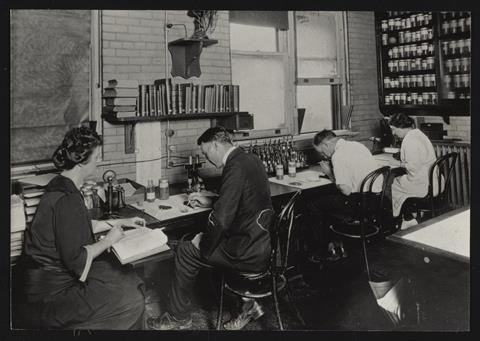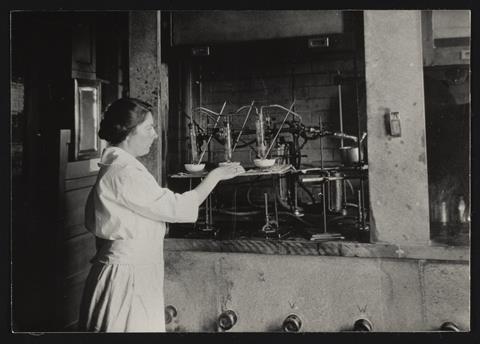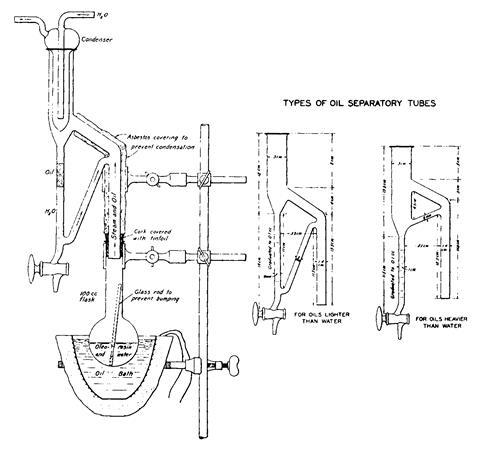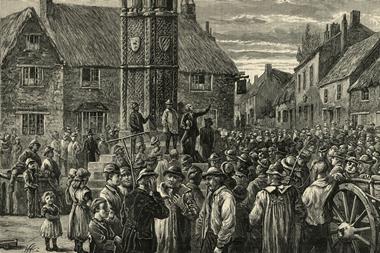Numerous tragedies beset the life of Joseph Franklin Clevenger (1874–1945)
How does one deal with grief? It is ineluctable and yet some seem to weather it with external serenity while others are incapacitated. One who suffered more than many during his career in science was Joseph Clevenger, the inventor of glassware for the extraction of essential oils from plant samples.
He was one of 14 siblings in Ohio, in the American heartland. He attended Ohio State University to study botany, where he met Mary Dresbach, the younger sister of a physiology instructor. They shared a love of fungi and married in July 1902. After Clevenger graduated with a master’s degree in 1905, they lived in Chicago for a spell, probably working as teachers. In 1910, their first child William died at birth.
In 1912, Clevenger returned to botany, joining the newly founded Mellon Institute for Industrial Research in Pittsburgh, Pennsylvania. He conducted a study of the effects of soot on plants, an important issue when coal-fired industry was spewing smoke across the countryside. The work showed that just as with sulfur dioxide, ethylene and other gases, soot or coal tar applied to the leaves of different plant species had a harmful effect.
With the work complete, Clevenger moved to Washington DC where he joined the Pharmacognosy Laboratory in the Department of Agriculture. The Clevengers had a second child, Dora, who also died. But in 1917 a third child, Helen, was born and grew healthily. By this time, the Clevengers had converted to the Bahá’í faith. Where had they encountered the movement? It is known that Abdu’l-Bahá, the son of the founder, met scientists and journalists in Pittsburgh in May 1912, speaking of healing and spreading the idea of an immanent, peaceful God identifiable with that of the ‘people of the book’ (Christians, Muslims and Jews), completely accepting comers from all faiths. At a time of rising tensions in the United States – there was significant opposition to intervention in the war in Europe while the Ku Klux Klan was spreading out of the South into cities like Washington – the message of quiet peace, contemplation, and acceptance of diversity would have been an attractive one, especially to a family that had suffered such grief.

Joseph’s lab work straddled chemistry and botany, conducting exhaustive Soxhlet extractions or steam distillations followed by characterisation of what compounds could then be isolated. He used the microchemical methods of Friedrich Emich and Fritz Pregl to purify and characterise potential pharmaceuticals. In 1924 he published the design of an microscope hot stage device, a decade before Adelheid Kofler.

Photographs of the lab from the period shows men and women sitting at a bench equipped with bottles of test reagents and binocular microscopes to carry out microscale tests on their plant isolates; another shows a woman scientist overseeing a set of vacuum sublimations conducted in a primitive fumehood with Bunsen burners and oil baths as heat sources. At a time when few women worked in science, it may have been a particularly congenial environment for a man whose faith held the equality between the sexes and races as a core tenet.
In 1924 Clevenger described a new method for the separation of essential oils by steam distillation. Ground plant material was refluxed in water in a flask equipped with a ‘separator’, a bent tube leading up to the condenser; a graduated vertical branch ended in a stopcock. Clevenger’s device features a diagonal bypass tube that returns liquid from the vertical trap to the reflux side. He proposed two variants, with the bypass tube connecting either above or below the graduations allowing for the collection of oils less or more dense than water.

Although the device resembles the Dean–Stark trap that is more familiar to chemists, Clevenger is unlikely to have seen the earlier paper published in the petroleum literature. Perhaps because of their origins and their original applications, the Dean–Stark and the Clevenger devices remain firmly anchored in different disciplines to this day.
As their daughter grew up, the Clevengers sent her to spend time at the Bahá’í retreat centre of Green Acre while Joseph became more involved in the community’s activities, with Joseph working on a huge map of the travels across the Middle East of the faith’s founders. They had by now moved to New York where Clevenger worked in the Food and Drug Adminstration’s lab, commuting from Staten Island each day. Helen was a model student, hooked on science, who won scholarships to New York University.
In the summer of 1936, Clevenger, who was becoming anxious that he was being too controlling, sent his daughter Helen (a model student, hooked on science, who won scholarships to New York University) to visit his brother William, an academic in North Carolina. Mary had misgivings. But Helen set off to survey dairy and cheese-making operations, sending a series of happy postcards to her parents describing what she was seeing in the South.
On 16 July she and William stayed at the palatial Old Battery hotel in Asheville, North Carolina. When she did not appear for breakfast, her uncle knocked on the door, found it unlocked, and discovered his niece brutally murdered on the floor. The local sheriff, needing a quick ‘result’ for his re-election, drove a bungled investigation and the arrest of a 22-year-old black man, Martin Moore. Moore was beaten to a pulp, giving a confession so flawed that it would be thrown out by the court. The story went viral in the press, with lurid insinuations and utter disregard for the parents’ privacy. At the trial, Clevenger fainted, overcome not just by emotion, but by the corruption and brutal reality of Jim Crow injustice in a segregated America. Moore, probably framed, was sent to the gas chamber.
Deep in his grief, Joseph went back to work, continuing to publish quietly. After Mary died in 1943 he remarried but died suddenly in 1945.
Helen’s senseless death remains a mystery, as did Clevenger’s thoughts about the matter. It is fashionable today to speak of ‘closure’ after grief. But what does this even mean? All one can hope for perhaps is to achieve a quiet and contemplative, Bahá’í acceptance of things as they are.
Acknowledgments
I am hugely indebted to Steven Kolins for sharing his knowledge and opened a window into the Bahá’í world.
References
J F Clevenger, J. Am. Pharm. Assoc., 1928, 17, 345

















No comments yet